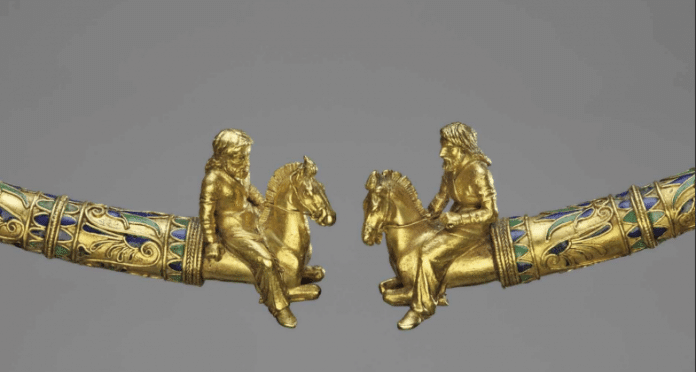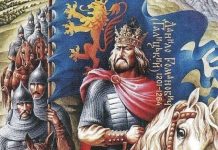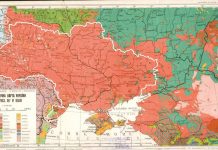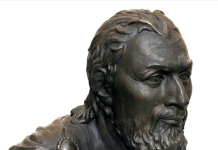The torques or gryvnas were the symbols of high office in the Scythian world. These adornments were worn by both men and women of royal or noble descent. Some of them had smooth surfaces and groups of sculptured animals like the torques from Tovsta Mogyla and Chertonlyk Royal Barrows. There were also twisted torques like the one seen on the neck of the noble Scythian on the Gaimanova vessel. The torques often terminated in caps inlaid with colored enamels.
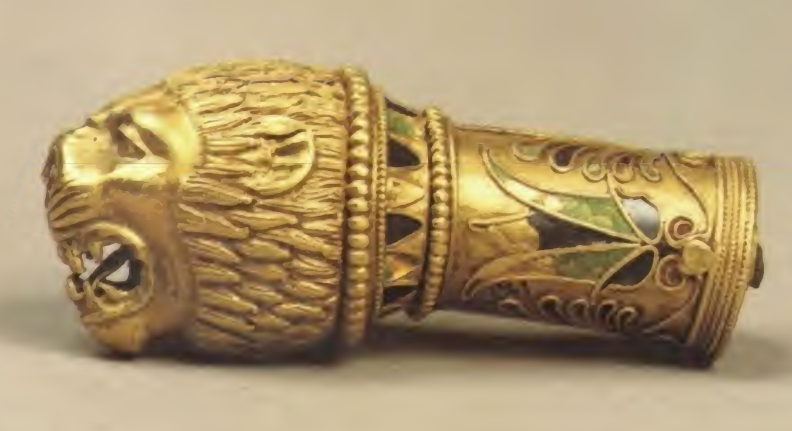
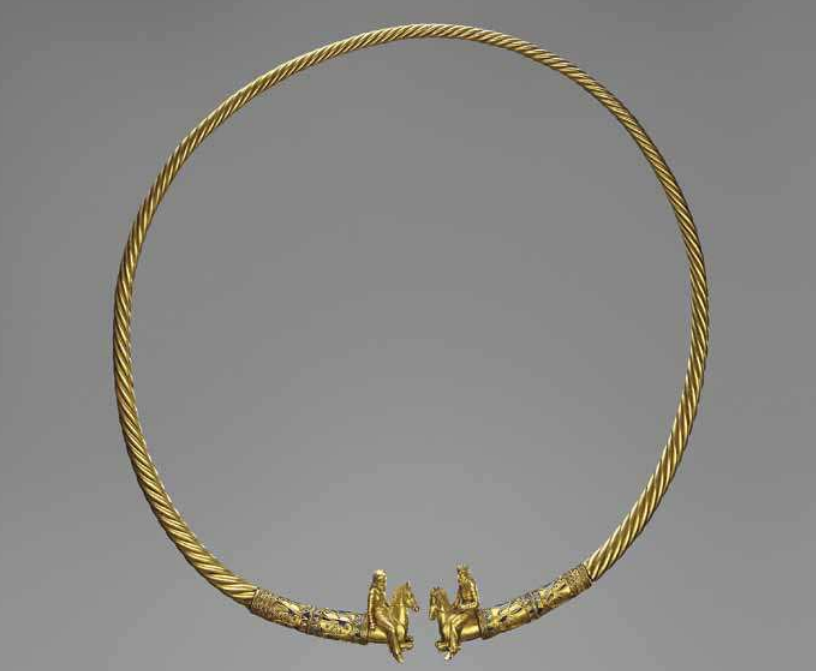
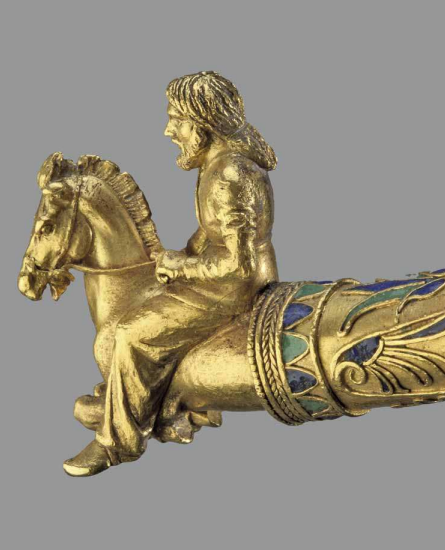
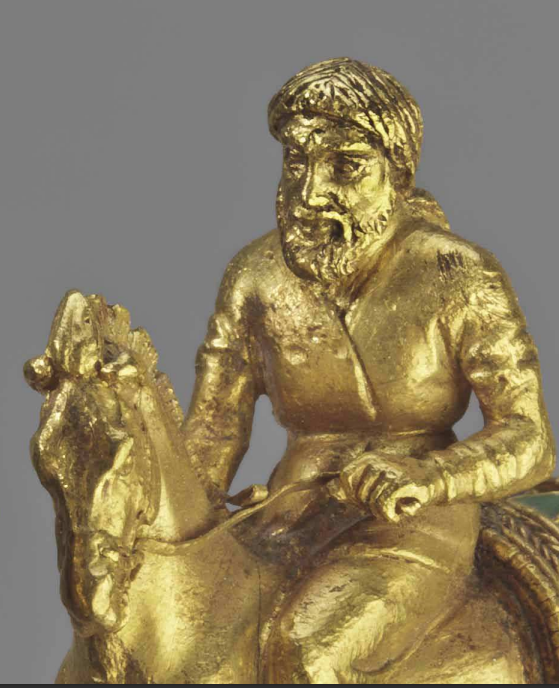
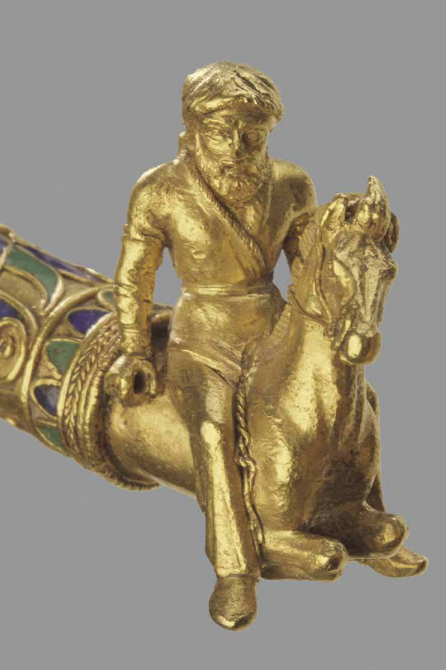
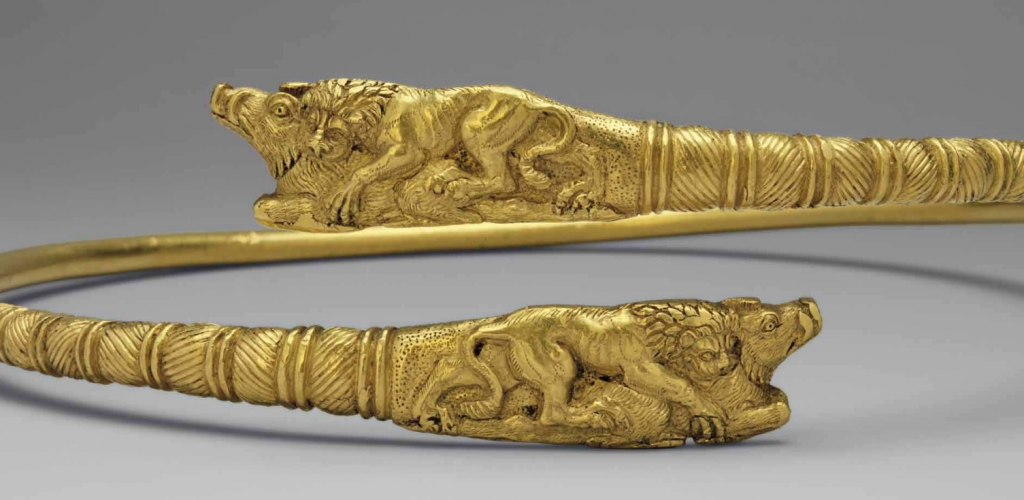
“Royal Scythia, Greece, Kyiv Rus” book has more insights into the excavations at Kul-Oba and Chertonlyk Royal Kurgans and other amazing artifacts discovered in them. The Karagodeauashkh barrow is described in the “Craddle of Civilizations” book.
Greek military leader, philosopher, and historian of the 4th century BC Xenophon of Athens in his ‘Anabasis‘ described the power struggle that took place in the Achaemenid empire at the time some of the Scythian barrows mentioned above were being erected. Xenophon mentioned torques several times in a very interesting context:
“When the two men finally met one another, Syennesis gave Cyrus a large sum of money for his army, while Cyrus gave him gifts which are regarded at court note as tokens of honor—a horse with a gold-mounted bridle, a gold necklace, and bracelets, a gold dagger and a Persian robe—promising him, further, that his land should not be plundered any more and that they might take back the slaves that had been seized in case they should chance upon them anywhere”. (Anabasis b 1.2.27)
“Once in particular, when they came upon a narrow, muddy place which was hard for the wagons to get through, Cyrus halted with his train of nobles and dignitaries and ordered Glus and Pigres to take some of the barbarian troops and help to pull the wagons out. But it seemed to him that they took their time with the work; accordingly, as if in anger, he directed the Persian nobles who accompanied him to take a hand in hurrying on the wagons. And then one might have beheld a sample of good discipline: they each threw off their purple cloaks where they chanced to be standing, and rushed, as a man would run to win a victory, down a most exceedingly steep hill, wearing their costly tunics and colored trousers, some of them, indeed, with necklaces around their necks and bracelets on their arms”. (1.5.8)
“And one report is that the King ordered someone to slay him upon the body of Cyrus, while others say that he drew his dagger and slew himself with his own hand; for he had a dagger of gold, and he also wore a necklace and bracelets and all the other ornaments that the noblest Persians wear; for he had been honored by Cyrus because of his affection and fidelity”. (1.8.29)
One may wonder where and when this tradition of wearing torques originated. Boris Mozolevsky was confident that it went back to the Bronze Age and was attested by the stone stelae from the Ukrainian steppe that had representations of such necklaces already in the 3d millennium BC.



